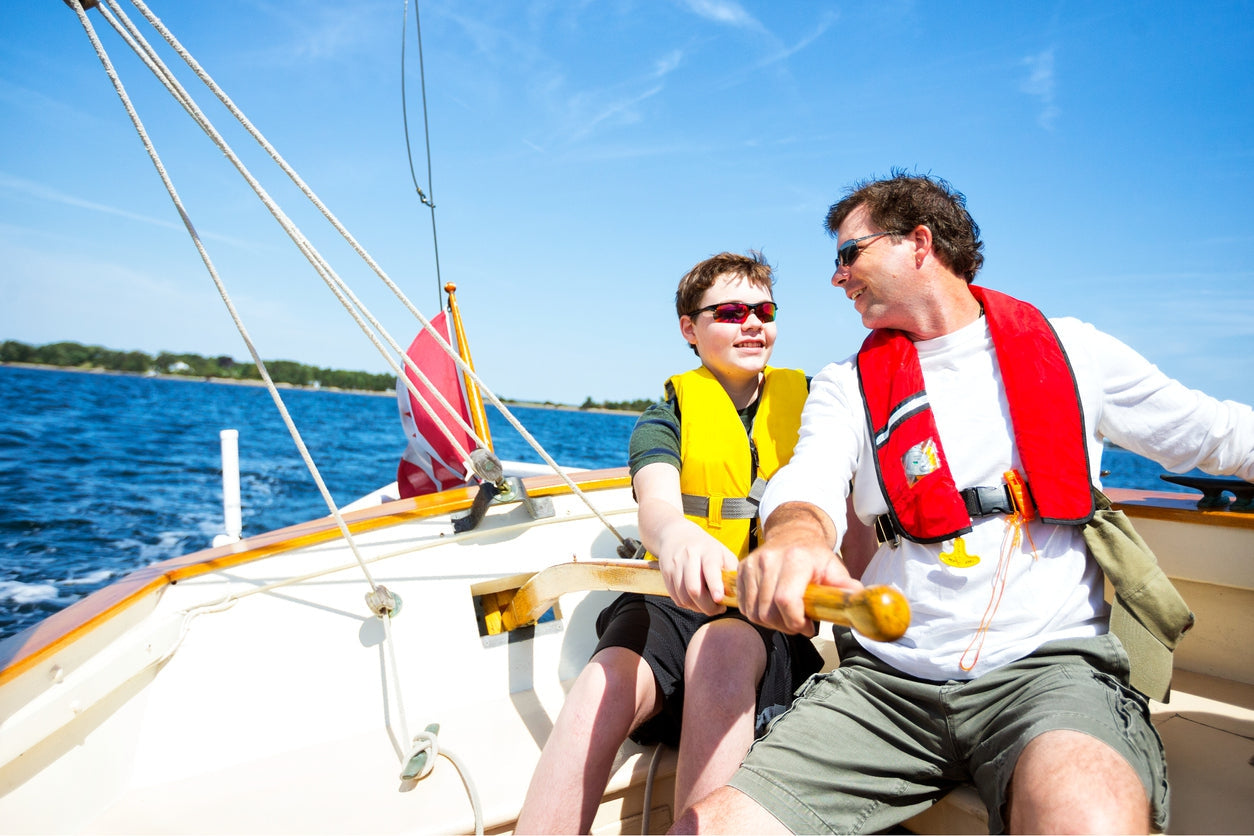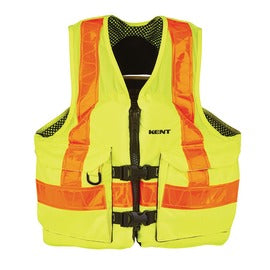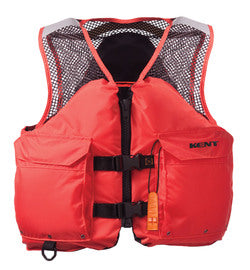Summer is a season of outdoor adventures, and for many, this includes spending time on the water. Whether you're boating, kayaking, jet skiing, or engaging in any water activity, safety should be your top priority. One crucial safety measure that should never be overlooked is the use of a life vest. In this article, we will explore the importance of wearing a life vest during your summer boating adventure and discuss various aspects related to life vests.
Understanding Life Vests
Definition and Purpose of Life Vests
A life vest, also known as a personal flotation device (PFD), is a crucial safety gear designed to keep individuals afloat in the water. Its primary purpose is to prevent drowning by providing buoyancy and keeping the wearer's head above water. Life vests come in various types, including inflatable, foam-filled, and hybrid designs, each with its own set of advantages and considerations.
Types of Life Vests
-
Inflatable Life Vests: These vests are lightweight and comfortable to wear, as they are inflated only when needed. They contain a CO2 cartridge that inflates the vest upon pulling a cord or when it comes into contact with water.
-
Foam-Filled Life Vests: These vests have buoyant foam built into them and provide consistent buoyancy regardless of external factors. They are suitable for activities where a constant flotation capability is required, such as kayaking or sailing.
-
Hybrid Life Vests: Combining the benefits of both inflatable and foam-filled vests, hybrid life vests offer comfort, buoyancy, and additional safety features. They typically have foam in the front and inflation capabilities on the back for optimal performance.
Factors to Consider When Choosing a Life Vest
When selecting a life vest, several factors should be taken into account to ensure the best possible fit and functionality.
-
Buoyancy: Look for a life vest with adequate buoyancy to support your body weight in the water. The required buoyancy varies based on individual factors, such as weight and body composition.
-
Fit: The life vest should fit snugly but comfortably without restricting your movements. It should have adjustable straps to achieve a secure fit for different body sizes.
-
Visibility: Opt for a life vest that is brightly colored and has reflective strips to increase your visibility in the water. This helps rescuers locate you more easily, especially during low-light conditions.
The Importance of Wearing a Life Vest
Preventing Drowning Incidents
Drowning incidents can happen swiftly and silently, even to strong swimmers. Wearing a life vest significantly reduces the risk of drowning by keeping you buoyant and allowing you to conserve energy. In case of an accident or unexpected entry into the water, a life vest ensures that you stay afloat, giving you precious time for rescue or self-recovery.
Enhancing Buoyancy and Reducing Fatigue
Even if you are a confident swimmer, the buoyancy provided by a life vest can make a significant difference during extended periods in the water. It reduces fatigue and muscle strain, allowing you to focus on other aspects of the situation, such as reaching safety or assisting others.
Providing Insulation and Warmth in Cold Water
During summer, the water temperature may vary, and some bodies of water might be colder than expected. Falling into cold water can lead to rapid loss of body heat, increasing the risk of hypothermia. A life vest helps to insulate your body and slows down heat loss, providing valuable protection in chilly conditions.
Increasing Visibility and Aiding in Rescue Operations
In emergency situations, being visible to rescuers is crucial. A brightly colored life vest with reflective strips helps search and rescue teams locate you more quickly. It acts as a visual signal, making you stand out against the water's surface. This increased visibility can be a lifesaver when every second counts.
Legal Requirements and Regulations
When it comes to boating safety, laws and regulations play a vital role. Understanding the legal requirements regarding life vest usage is essential to ensure compliance and personal safety.
Laws and Regulations Regarding Life Vest Usage
Different countries and regions have specific laws governing life vest usage for various water activities. Familiarize yourself with the local regulations and requirements to ensure you are in full compliance. These laws typically outline when life vests must be worn, who must wear them, and the types of vests that meet the standards.
Age-Specific Requirements for Children
Children are particularly vulnerable to water-related accidents. Many jurisdictions have age-specific requirements for children wearing life vests. These laws take into account the child's age, weight, and the type of watercraft they are on. It is crucial to choose a life vest that is appropriate for a child's size and meets the safety standards set by the authorities.
Boating Under the Influence (BUI) Laws and Life Vest Usage
Boating under the influence of alcohol or drugs can impair judgment, coordination, and reaction time, significantly increasing the risk of accidents. In many places, BUI laws exist to deter such behavior. It is important to note that wearing a life vest is mandatory even if you are not operating the boat but are a passenger, as the risk of accidents and unexpected falls remains.
Proper Life Vest Usage and Maintenance
Using a life vest correctly and ensuring its proper maintenance are essential to guarantee its effectiveness in an emergency situation.
How to Properly Wear and Adjust a Life Vest
-
Start by checking the vest for any signs of damage or wear and tear. Replace any vests with visible damage.
-
Put on the life vest and zip it up or fasten the buckles, depending on the design. Adjust the straps to achieve a snug fit, ensuring that the vest does not ride up when liftedor when in the water.
-
Test the fit by lifting your arms above your head and checking if the vest remains secure. If it rides up excessively, readjust the straps for a tighter fit.
-
Make sure the life vest is not too loose or too tight. A properly fitted vest should allow you to breathe comfortably while staying securely in place.
Inspecting and Maintaining Life Vests
Regular inspections and maintenance are crucial to ensure the reliability and functionality of your life vest.
-
Routinely check the vest for signs of wear, such as fraying straps or torn fabric. Replace any damaged components immediately.
-
Clean the life vest according to the manufacturer's instructions. Use mild soap and water to remove dirt, salt, or other residues. Avoid using harsh chemicals or bleach.
-
Store your life vest in a cool, dry place away from direct sunlight. Excessive heat and sunlight exposure can degrade the materials over time.
Common Mistakes to Avoid While Using Life Vests
To maximize the effectiveness of your life vest and ensure your safety, be aware of common mistakes and avoid them:
-
Not wearing a life vest: One of the most significant mistakes is not wearing a life vest at all. Always wear your life vest when participating in water activities, regardless of your swimming ability.
-
Choosing the wrong size or fit: Selecting a life vest that is too large or too small can compromise its effectiveness. Ensure you choose the right size and fit for your body.
-
Not checking the vest's condition: Regularly inspect your life vest for any signs of damage or wear. Replace any damaged vests promptly.
-
Removing the life vest prematurely: Keep your life vest on until you are safely out of the water or back on the boat. Removing it too early can put you at risk, especially in unpredictable water conditions.
Additional Safety Measures
While wearing a life vest is crucial, it is only one aspect of boating safety. Adopting additional safety measures can further enhance your overall safety during summer boating adventures.
Boating Education and Training
Investing in boating education and training courses can provide valuable knowledge and skills to navigate the water safely. Learn about boating rules, navigation techniques, emergency procedures, and basic first aid. Education and training empower you to make informed decisions and handle unexpected situations effectively.
Weather Awareness and Checking Conditions
Before heading out on the water, check weather forecasts and conditions. Sudden storms, high winds, or rough waters can pose significant risks. If the weather is unfavorable or unsafe, it is best to postpone your boating adventure. Remember, it's better to be safe than sorry.
Communication Devices and Emergency Equipment
Carry communication devices such as a fully charged cell phone, a marine radio, or a personal locator beacon (PLB). These devices allow you to contact emergency services or other boats in case of an emergency. Additionally, keep emergency equipment on board, including a first aid kit, flashlight, whistle, and flares, to signal for help if needed.
Life Vests for Different Water Activities
Different water activities require specific types of life vests to ensure optimal safety and comfort. Let's explore the appropriate life vests for various popular water activities:
Boating and Sailing
When boating or sailing, it is crucial to wear a life vest designed for those activities. Look for a comfortable and well-fitted vest that allows freedom of movement. Consider vests with additional features like pockets for storage or built-in harnesses for sailing.
Kayaking and Canoeing
For kayaking or canoeing, opt for a life vest with a shorter cut, allowing better mobility for paddling. Look for vests with multiple adjustment points to achieve a secure fit. Consider models with high-back designs to provide comfort while seated.
Jet Skiing and Wakeboarding
Engaging in high-speed activities like jet skiing or wakeboarding requires specialized life vests. Look for vests specifically designed for these activities, featuring impact protection and secure fastenings. These vests should provide a snug fit to stay in place during dynamic movements.
Fishing and Paddleboarding
When fishing or paddleboarding, choose life vests with a lightweight and low-profile design. These vests should not hinder your movements and allow for unrestricted casting or paddling. Consider vests with multiple pockets to store small fishing gear or personal items.
Choosing the Right Life Vest for Your Needs
Selecting the right life vest tailored to your specific needs and preferences is essential for maximum safety and comfort.
Factors to Consider Based on Water Activity
Consider the following factors when choosing a life vest based on your water activity:
-
Buoyancy: Ensure the life vest provides sufficient buoyancy for your body weight and the water conditions you will encounter.
-
Range of Motion: Opt for a vest that allows a wide range of motion, particularly if you will be engaging in activities that require extensive movement.
-
Durability: Choose a life vest made from high-quality materials that can withstand frequent use and exposure to water.
Finding the Right Fit and Size
To find the right fit and size for your life vest:
-
Measure your chest size accurately using a measuring tape.
-
Consult the manufacturer's size chart to determine the appropriate size range for your measurements.
-
Try on different vests within your size range to ensure the best fit. Adjust the straps and fastenings to achieve a snug and secure fit.
Importance of Testing Life Vests Before Purchase
Before purchasing a life vest, it's advisable to test it in a controlled environment. This allows you to assess its fit, comfort, and functionality. Consider borrowing or renting different models before making a final decision. Testing life vests firsthand ensures that you invest in the one that best meets your needs and preferences.
Life Vests for Pets
When enjoying summer boating adventures with your furry friends, their safety should also be a top priority. Here's what you need to know about life vests for pets:
Ensuring Safety for Pets on Boats
Just like humans, pets can be at risk of accidents or unexpected falls while on boats. To ensure their safety, provide them with a properly fitted life vest designed specifically for pets. This will help keep them afloat and reduce the risk of drowning.
Types of Life Vests for Pets
Pet life vests come in various sizes and designs. Look for vests that have a handle on the back to assist in lifting your pet out of the water if needed. Ensure the vest has adjustable straps to achieve a snug fit. Choose brightly colored vests to enhance visibility.
Tips for Fitting and Acclimating Pets to Life Vests
-
Introduce the life vest to your pet gradually, allowing them to sniff and explore it before attempting to put it on.
-
Make sure the vest is snug but not too tight. Check for any signs of discomfort or irritation while your pet is wearing the vest.
-
Gradually acclimate your pet to wearing the vest by starting with short periods of time and gradually increasing the duration.
-
Reward your pet with treats and positive reinforcement to create a positive association with wearing the life vest.
Conclusion
When embarking on summer boating adventures, the importance of wearing a life vest cannot be overstated. Life vests are designed to keep you afloat, prevent drowning incidents, enhance buoyancy, provide insulation, increase visibility, and aid in rescue operations. Understanding the different types of life vests, legal requirements, proper usage and maintenance, and additional safety measures allows youto make informed decisions that prioritize your safety and the safety of others. Remember to choose the right life vest based on your water activity, find the perfect fit, and test the vest before making a purchase. And don't forget about the safety of your furry friends—ensure they wear properly fitted life vests designed for pets. By prioritizing safety and making responsible choices, you can enjoy your summer boating adventures with peace of mind.



